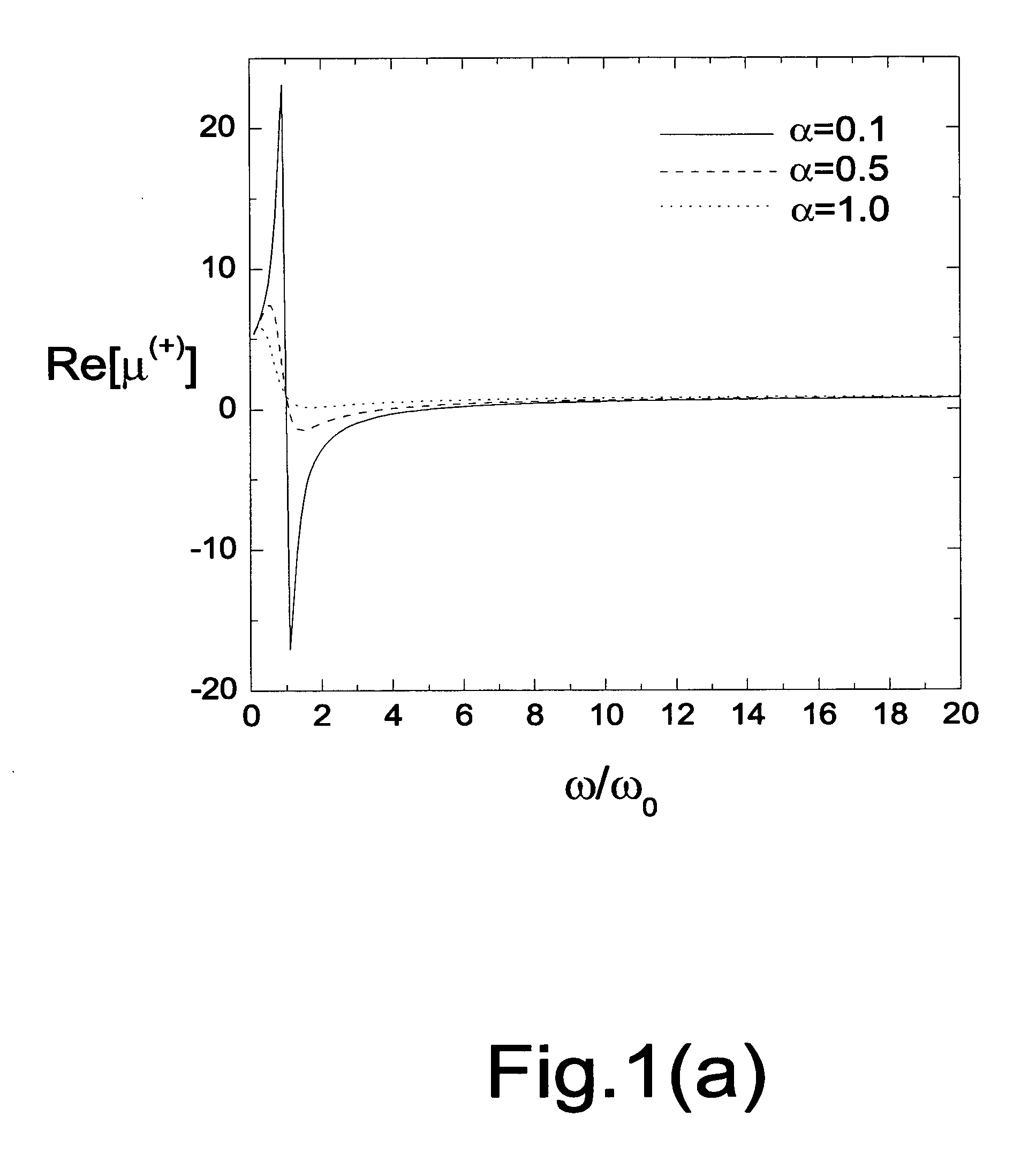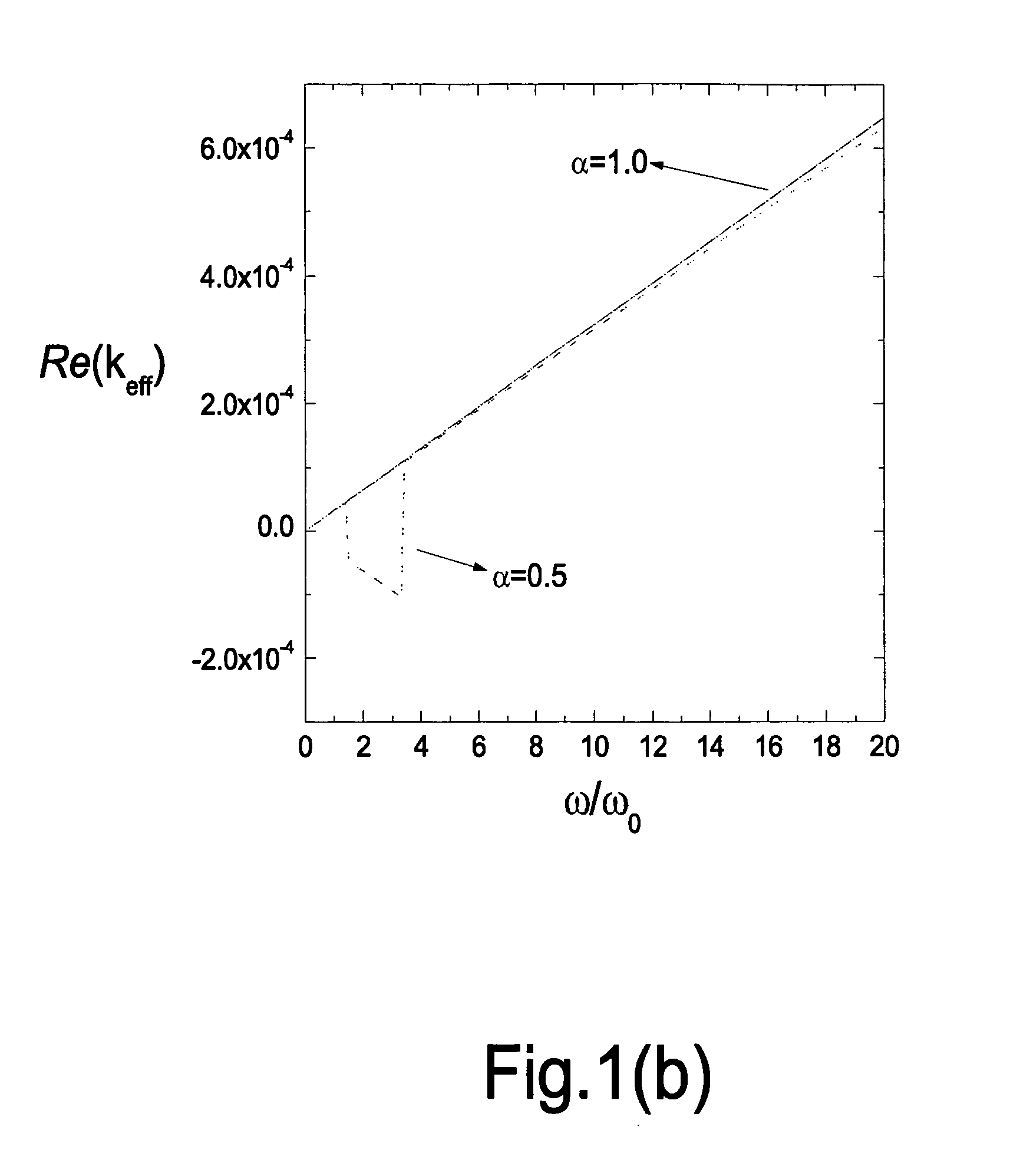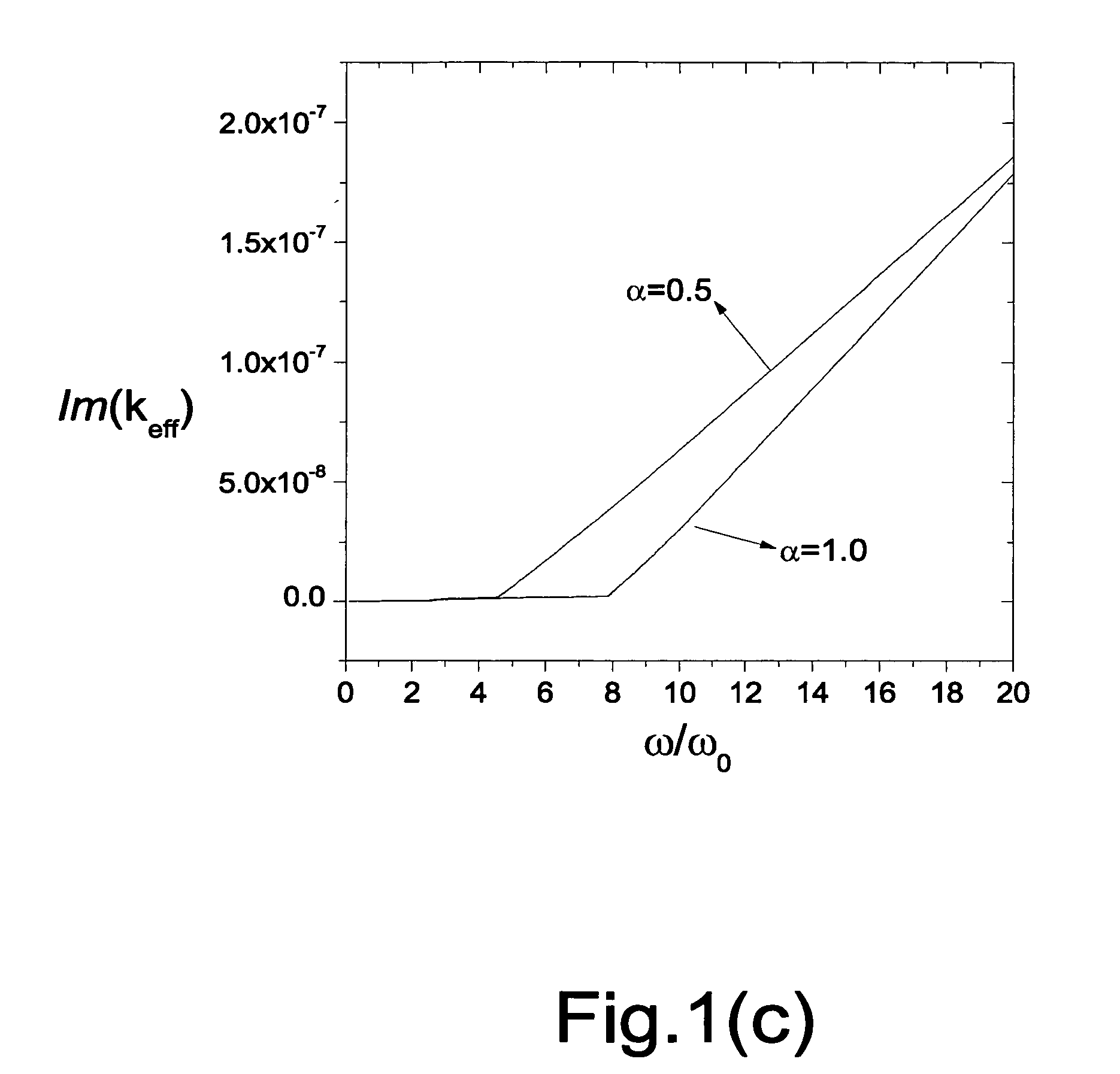Left handed materials using magnetic composites
a technology of magnetic composites and materials, applied can solve the problems of materials used in the proposed process, materials that have never been found in nature, and materials that cannot be used in the field of left-handed materials
- Summary
- Abstract
- Description
- Claims
- Application Information
AI Technical Summary
Problems solved by technology
Method used
Image
Examples
example 1
Fabrication of Co Nanoparticles:
[0044] 1. Dissolve 17.5 g Co(OH)2 into 350 ml ethylene glycol (EG) so that the concentration of [Co2+] is around 0.2 M; [0045] 2. Slowly heat the solution with mechanic or magnetic stirring to the boiling point of EG to distill off water and other small molecules; [0046] 3. Weight 1˜10 mg K2PtCl4 and dissolve them into a few mL EG, then inject the solution into above system so that the concentration of K2PtCl4 is 0.05˜1 mM. This will generate many tiny Pt clusters serving as nucleating center; [0047] 4. Continue heating the mixture and maintain refluxing for several hours (3-5 hrs) before cooling down the mixture to RT.
[0048] 5. The precipitation is separated from the solution by using a magnet or centrifugator. The precipitates are first washed in de-ionized water for 3 to 4 times, then in alcohol and acetone for several times, and finally dried at about 50° C. in argon atmosphere. The obtained Co nanoparticles have sizes between 30 nm to 100 nm, ...
example 2
Fabrication of CoNi Particles:
[0049] 1. Dissolve 4.5 g Co(OH)2 and 4.5 g NiCl2 into 75 ml ethylene glycol (EG); [0050] 2. Dissolve 6 g NaOH into 75 mL EG; [0051] 3. Mix above two solutions well by vigorous stirring; [0052] 4. Slowly heat the mixture to boiling and maintain refluxing for 3-5 hrs before cooling down the mixture to room temperature. [0053] 5. The precipitation is separated from the solution by using a magnet or centrifugator. The precipitates are first washed in de-ionized water for 3 to 4 times, then in alcohol and acetone for several times, and finally dried at about 50° C. in argon atmosphere. The obtained CoNi nanoparticles have size around 1 μm, saturation magnetization between 110 to 150 emu / g, and coercive field Hc between 100 to 300 Oe.
example 3
Fabrication of Co Nanoparticles:
[0054] Pour 200 ml mineral oil into the bottom of a reaction beaker; 5.384 g of CoCl2.6H2O is first dispersed and partly dissolved into 200 ml ethanol and then added on the top of the oil. (Oleic acid can be added to reduce the agglomeration of magnetic particles). 1.712 g of NaBH4 is dissolved into 200 ml ethanol and then add into above solution in a drop-like manner by using a dropping funnel. A magnet under the reaction beaker is used to attract the formed magnetic particles into the oil phase. After the reaction is completed, with the help of the magnet, the supernatant solution and the oil are dismissed. The slurries are first washed by alcohol and acetone for several times to remove the residual oil, then followed by rinsing in de-ionized water for several times to thoroughly remove NaCl formed during the reaction, and finally washed by acetone again to remove water. The formed Co nanoparticles are either kept in mineral oil or a vacuum desicc...
PUM
| Property | Measurement | Unit |
|---|---|---|
| particle size | aaaaa | aaaaa |
| plasma frequency | aaaaa | aaaaa |
| size | aaaaa | aaaaa |
Abstract
Description
Claims
Application Information
 Login to View More
Login to View More - R&D
- Intellectual Property
- Life Sciences
- Materials
- Tech Scout
- Unparalleled Data Quality
- Higher Quality Content
- 60% Fewer Hallucinations
Browse by: Latest US Patents, China's latest patents, Technical Efficacy Thesaurus, Application Domain, Technology Topic, Popular Technical Reports.
© 2025 PatSnap. All rights reserved.Legal|Privacy policy|Modern Slavery Act Transparency Statement|Sitemap|About US| Contact US: help@patsnap.com



